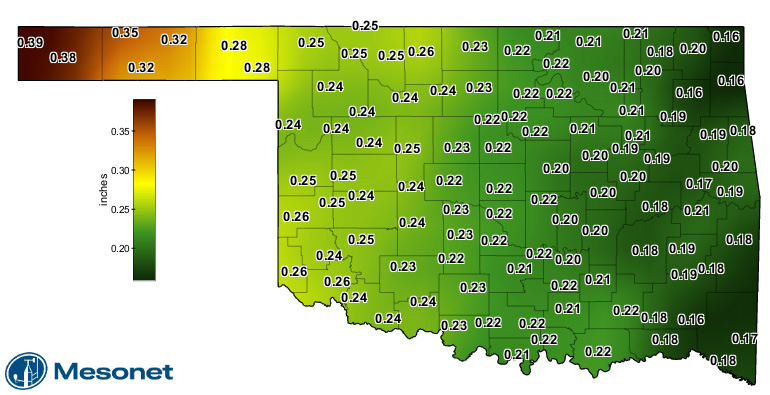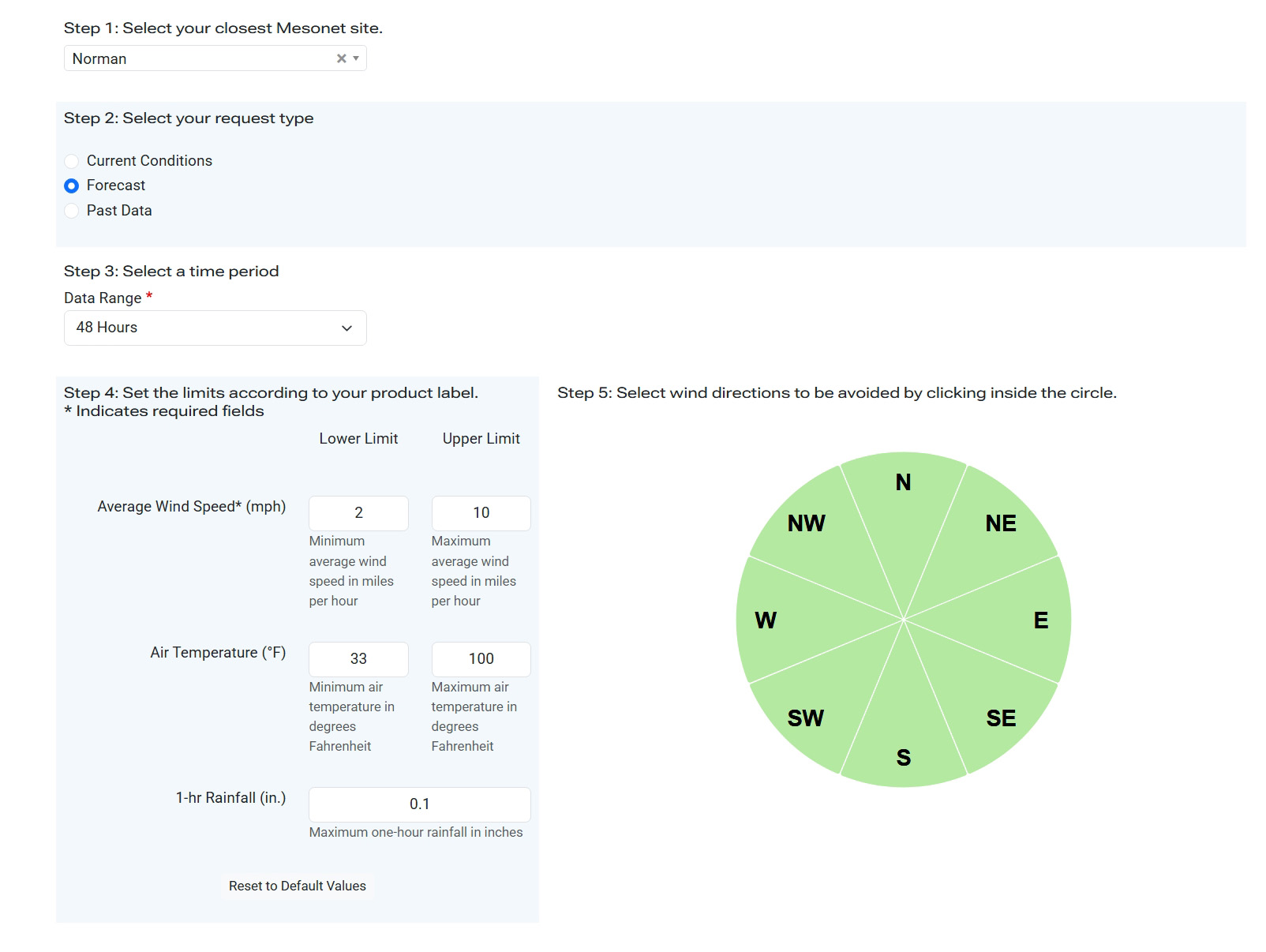Mesonet Agriculture
Since its beginning, Oklahoma Mesonet has been jointly operated by OSU and OU. The primary interest of OSU in Mesonet is to provide the farm and ranch community with access to critical real-time weather data, historical weather data, and value-added decision-making tools.
Every five minutes the system’s 120 towers provide agriculture clientèle with temperature,
wind, solar radiation, barometric pressure, relative humidity, and rainfall data.
Sensors below ground provide critical soil moisture and soil temperature information.
At Mesonet, this real-time weather data is incorporated into interactive tools that
assist in making on-farm decisions that are based on weather and science and not just
on a calendar basis. For crops, these tools include products for insect and disease
management, growing degree days, irrigation scheduling, drought, and pesticide drift
control. For livestock producers, there are tools that deal with cattle comfort, wheat
grazing management, and odor dispersion.
Reference ET is adjusted for a crop specific ET under the irrigation section on the Mesonet (Agriculture to Crops (then choose a crop) to Irrigation Planner).
Figure 1. An example of Short Crop Reference Evapotranspiration
The drift risk advisor 48-hour forecast takes inputs of the forecasted wind speed, air temperature, and 1 hour rainfall, as well as user suggested wind directions to be avoided. Those inputs determine whether the conditions for the product label are predicted to be met or not.
Figure 2. An example of the Drift Risk Advisor.
The Drift Risk Advisor is a weather-based forecast tool for planning spray applications. It does not replace the best judgement of the applicator or applicator responsibility to follow label instructions due to actual field conditions.
A useful tool for livestock management is the cattle comfort index (CCI) which considers
the stress level for cattle using air temperature, wind speed, relative humidity,
and solar radiation. Specifically, the index can help determine the water and food
demand of the cattle based on the comfort level.
Figure 3. An example of the forecast for the warmest cattle comfort index.
Accessing the weather information is free at the Oklahoma Mesonet website. You can go directly to the agriculture decision making tools. For more information, please don’t hesitate to contact Oklahoma Mesonet.



